

Full-day country walks in
SE England and beyond
Lewes circular via Rodmell
Distance: 10.3 miles (or 7.3 / 8.8 if returning from Southease).
Time without long breaks: Apx 5 1/2 hours.
Terrain: Includes one steep climb up to the Downs ridge.
How to get there and back: Train to and from Lewes.
Pubs breaks: The Abergavenny Arms at Rodmell and the Juggs Inn at Kingston. In Lewes, we recommend the Gardeners Arms, the Snowdrop and the Lewes Arms. There is also The Patch craft ale bar and two excellent micro-brewery taprooms (check for opening hours) – Beak and Abyss.
More information: Check the Monk's House website for opening times. Booking may be required. This is one of two circular walks from Lewes (also see walk 22). For anyone interested in the Bloomsbury Group, walk 24 includes Charleston.
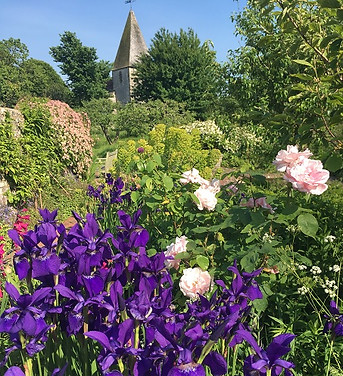
Click on the image below to access the full map on Plotarooute.com
Starting and ending in the East Sussex county town, this walk follows an old trading route and then ascends to the top of the Downs, where there are far-reaching views of the surrounding countryside. You descend to the village of Rodmell and Monk's House, the former home of Virginia Woolf and now a National Trust property. The final section takes you along the banks of the River Ouse back to Lewes (alternatively, you can catch a train from Southease and Rodmell station). Although the route could be completed over a long afternoon, allow longer for the visit to Monk's House and pub breaks.
Exit Lewes station and turn left. By the roundabout, behind Mountfield House and next to the Dripping Pan football ground (allegedly haunted by ghostly monks) is the curious Priory Mount, an ancient mound of unknown purpose and origin which you can climb up for views over the Lewes brooks. Follow the road round into Southover High Street. Further down on the left is Cockshutt Road, which leads to the ruins of Lewes Priory (see below). On the right, you pass Anne of Cleves house, one-time residence of Henry VIII's fourth wife and now a museum. When you reach The Swan pub, bear left then right into Juggs Road.
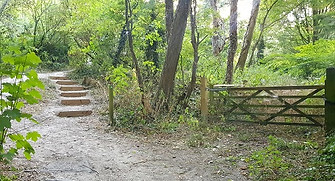
Walk up The Street, passing the church on your right, until it becomes a track. Ignore the gate on the right and take the steps through the woods ahead, following the sign on the post. This is the start of a steep ascent to the ridge of the Downs. Cross over a stile and continue up the winding path until you meet a track near the brow. Turn right and a few meters on, at a junction of paths by some gates, turn left to head east along the South Downs Way, as indicated by the wooden signpost. This is a glorious stretch of the Downs, with some stunning views. In half a mile you pass Dencher Road on your left, a track that heads down the steep escarpment. In another 20m, the SDW turns sharply right and then left to continue in the same direction as before.
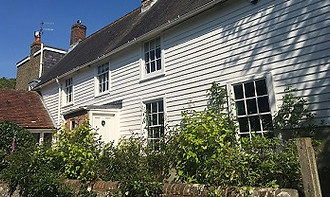
For the shortest route, you can head to Southease station
(1 1/2 miles) from here: Walk along the narrow lane to the church and then take the path on the right that leads back to Piddinghoe Road. Then turn left and take the footpath that runs parallel to the main road, turning left at the junction for the beautiful hamlet of Southease. About 500m along the South Downs Way, cross the river to reach the station for trains back to Lewes. The main route carries on along The Street in the same direction you were walking before. It soon becomes a track that leads to the River Ouse (Virginia Woolf drowned herself in the river somewhere near this spot).
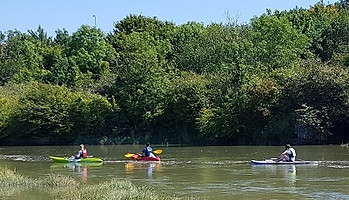
Alternatively, if you want to visit the ruins of Lewes Priory, turn left at the signpost. The path goes through woods, with some works on your left. Turn right when it emerges at a lane and then left at the junction. Bear right, passing a house on your left. This is Cockshut Road that runs parallel to the A27. Follow the lane until your reach a turning on your right to a sports club with a railway arch ahead. On your right, you will come to Priory Fields and the ruins of the vast 11th-century Cluniac priory (parts of which were demolished during the construction of the railway). To get to the station, head back to Cockshut Road, turn right and then right again into Southover High Street. It's five minutes from here.

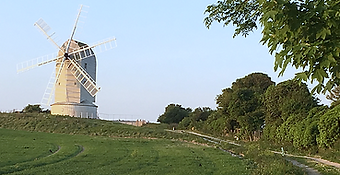
Juggs Road was the old route from Brighton to Lewes, named after the baskets of fish the women of Brighton used to carry to market. Proceed up the road and then cross the bridge over the dual carriageway. Continue along the lane until it reaches a gate opening on to a beautiful stretch of open countryside, with views of Mount Caburn and Firle Beacon. Towards the end of the path is Kingston Windmill, a local landmark that can be seen from miles around. The track becomes a lane, emerging at a road. Turn left and walk into Kingston Village. After about 600m, on the right, you will come to The Street and the Juggs Inn pub.
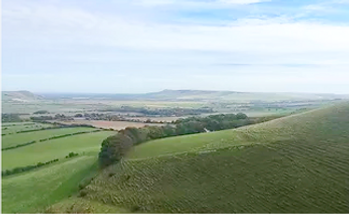
About 1 1/2 miles from here you reach Mill Hill, with some houses and a crossroads of paths. Turn left, following the sign saying 'To the pub'. It heads along the lane and down the hill to the village of Rodmell. At the junction with Piddinghoe Road, you will find the pub – The Abergavenny Arms. From here, carry on up The Street into Old Rodmell. On the right, you will come to a footpath to the church and 16th-century Monk's House – former residence of Virginia and Leonard Woolf (see panel). The house and garden are an essential visit for anyone interested in the Bloomsbury Group. Be warned though that it closes quite early (for more on the Bloomsbury Group in Sussex, see walk 24).
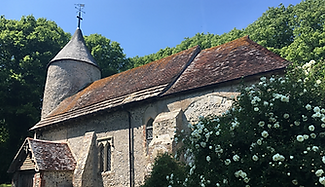
There is another shorter option here (1 1/4 miles). Turn right when you reach the river and walk along it until you reach a bridge, then cross over to reach Southease station. For the main route, turn left and carry on along the Ouse to Lewes (3 1/4 miles). This route take you along the banks of the river through The Brooks until you cross under the A27. There are then two options for heading into the town. If you want to carry on along the river, when you reach a wooden signpost after the gate to some works, follow the path via a gate under the railway bridge. This takes you through the meadows via some stiles and comes out at Railway Lane, next to a nature reserve, which leads to Cliffe High Street.
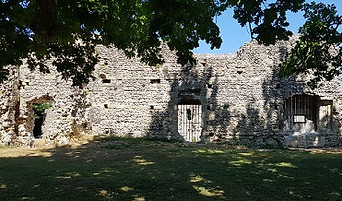
If you are interested in Virigina Woolf, there is another site you can visit. At the top of the High Street, just past the castle and opposite Bull Lane, look for tiny Pipe Passage. This takes you past a quirky house on the left which is converted from the base of an old windmill. Woolf considered purchasing this before moving to Firle (see walk 24). Turn right at the end of Pipe Passage and then walk up Castle Lane, which winds around the back of the castle, before emerging at Castle Gate (the great Lewes Arms pub is just round the corner from here). Turn right to go past a bowling green and then go under the castle barbican and past the museum to return to Lewes High Street.
This route is haunted by Virginia Woolf – the most fascinating member of the Bloomsbury group – feminist, essayist, novelist, autodidact, publisher, abuse survivor, Sapphist and lover of the countryside. She had a lasting connection with this area and did much of her writing here. She and her husband Leonard spent their wedding night in 1912 in Asheham House in Beddingham near the banks of the Ouse. As well as weekends and holidays at Asheham, Virginia also spent time recovering there after a severe bout of depression, of which she had many. The first episode was in her teens and she described having auditory hallucinations – birds speaking Greek – which later featured in her novel Mrs Dalloway. In 1919, the couple bought Monk’s House in Rodmell on the other side of the river and moved in permanently in WW2 to escape the bombs which destroyed their London home. The couple made a suicide pact if England fell to Germany, afraid of what would happen to Leonard – a Jewish intellectual.
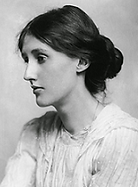
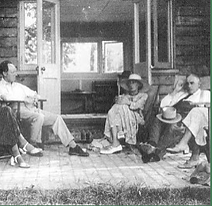
Virginia was a keen walker, visiting her sister Vanessa who lived in nearby Charleston and walking at least a couple of hours most days. It maintained her balance – she once said 'I went out to walk myself serene.' Monk’s House and garden are beautiful. Photos show members of the Bloomsbury group relaxed and happy in the garden – bowling, talking and sitting by the pond, overlooked by Rodmell church and Mount Caburn. On 28 March 1941, Virginia took her last walk from the house. Wearing wellies and a fur coat, she put stones in her pockets and walked into the Ouse, leaving her footprints in the mud alongside her stick. Her note for Leonard was full of praise and love – and fear of another collapse. It began: 'I feel certain I am going mad again… and I shan’t recover… I begin to hear voices.' Her body washed up three weeks later, near to Southease bridge and Asheham House. Her ashes are buried in Monk’s House garden, her Sussex idyll. BH
Walks by County
Listed by the most traversed
county for each route
Berkshire
Buckinghamshire
Henley circular
Pr. Risborough-Wendover
Tring circular
Tring-Leighton Buzzard
Cambridgeshire
Cambridge-Trumpington
Whittlesford-Wandlebury
Derbyshire
Edale-Hope
Dorset
Corfe Castle-W. Matravers
East Sussex
Ashdown Forest
Berwick circular
Berwick-Seaford
Cuckmere Haven-E'bourne
Forest Row-Eridge
Glynde-Berwick
Glynde-Seven Sisters
Isfield-Lewes
Lewes circular 1
Lewes circular 2
Lewes-Hassocks
Lewes-Rottingdean
Plumpton-Hassocks
Rye-Three Oaks
Gloucestershire
Kingham circular
Toddington-Cleeve Hill
Hertfordshire
Codicote-St Albans
Odsey-Royston
Kent
Oxfordshire
Surrey
West Sussex
Bramber-Amberley
Steyning circular
West Yorkshire
Haworth-Hebden Bridge
Wiltshire
Avebury circular
